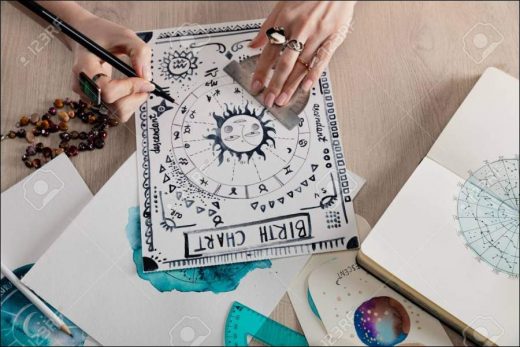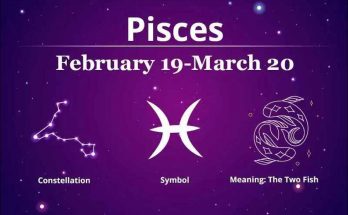Square and opposite angles in astrology. In a natal chart, planets establish angular relationships with each other based on their signs and degrees. There are four basic aspects in astrology; These are conjunction, opposition, square and trine angles.
Squares and oppositions—and conjunctions when a negative planetary influence is involved—are considered “difficult aspects” because they indicate tension, conflict, and obstacles in a person’s life. Particularly when the angle is forming, that is, views in converging degrees are more effective than receding angles.
In this article, we will talk about square and opposite angles and explain the differences between them.
Square Angle: Conflict
When two planets are aligned 90 degrees apart, this indicates a square angle. A square angle indicates an internal conflict or imbalance. In the case of a square angle, there is a war, a conflict between different tendencies and desires in the areas represented by the two planets. When this conflict is not managed correctly, emotions such as boredom, anxiety, anger and uncertainty may arise. Working through conflicting emotions can be extremely difficult.
However, all these uneasy feelings caused by the square angle drag the person into action. The discomfort between the issues represented by the two planets provokes a person’s inner unrest, acting as a catalyst for change, transformation and action. Thus, the person leaves his comfort zone and realizes his growth adventure in the conflict areas of the outside world. The disappointments, obstacles, and struggles associated with the square aspect can lead to one’s growth.
For example, those with a natal square between the Moon and Neptune face a unique set of psychological dynamics. They idealize many emotions/situations, but precisely because of this idealization, they constantly conflict with the harsh reality of the emotional states they actually experience.
Individuals with Moon square Neptune tend to romanticize their feelings, creating elaborate fantasies of an emotional ideal/goal. However, when they encounter the inevitable mistakes, flaws and confusion in their real lives, they may experience great disappointment.
There is a conflict between the longing for emotional perfection and the messy subtleties of emotions. This conflict may become a source of internal turmoil over time. The person may become lost in the landscape of their own emotions and have difficulty understanding/reading the emotions of others.
This confusing situation may cause the person to develop extreme sensitivity to emotional stimuli and have difficulty in drawing correct boundaries. He may feel frustration and helplessness in the midst of a vast “sea of influences” from outside. When the Moon squares Neptune, a person’s search for balance often involves finding solace and relief by escaping from something. Fascinated by their own fantasies, these people feel vulnerable to the demands of reality and real relationships.
Those with Moon square Neptune in their charts may have difficulty defending their emotional security. They may feel that the emotional experiences they experience direct their lives and that they are thrown away by these experiences. Allowing this drift every time can have devastating consequences.
When the Moon Neptune square angle creates a conflict between dreams and real needs, the map owner must experience the beauty of his ideals by facing the source of fears, without breaking away from the realities and responsibilities of life.
Opposition: Confronting the Shadow
In astrology, an opposition angle occurs when two planets meet at an angle of 180 degrees. Imagine a rope pulling you with the same force from both sides. The opposite angle is such an effect.
The opposite angle may indicate a need for balance and integrity between opposites. It can be associated with the “Anima” and “Animus” archetypes or the “Hero” archetype. The hero archetype represents the journey of overcoming opposites and achieving wholeness.
The opposition angle can be likened to two sides, two opponents, facing each other in a battle arena. The opposite angle symbolizes duality and polarization. There is an occasional “tug of war” effect. The person seeks a balance and integration between the forces at two different extremes. Especially if there is intense opposition in the chart, the person may have difficulty in making decisions and seeking harmony in their relationships in general and in different aspects of life.
Differences between Square and Opposite Angle
Square aspects are considered dynamic aspects because they require action and initiative to handle tension. In opposite angles, people can sometimes act more passively. A middle path can be found by gaining conscious awareness of the opposite angle.
Square angles often manifest as internal conflicts within oneself, while opposition angles can manifest as conflicts or oppositions between individuals’ inner world and external situations.
The square angle is a persistent influence for growth and transformation. It can create crises and a sense of urgency. In the opposite angle, there is a need for balance and integration. Harmony and balance must be sought between opposing forces.
The square angle requires active problem solving, a willingness to face and overcome challenges. The solution to the opposite angle is diplomacy, compromise, and finding common ground to resolve differences.
Squares often arise from internal motivations and desires. It indicates the need to resolve contradictory dynamics within the person through conflict. Opposition aspects emphasize the need for cooperation and negotiation with the world outside.
The square angle symbolizes empowerment by overcoming obstacles and limitations and growth through the transformation of inner forces. The opposition angle is an effect that balances and integrates opposing energies, encouraging more harmonious energies.
Square aspects are considered shorter-term influences in Natal or transit charts, indicating certain periods of tension and conflict. Opposite angles, on the other hand, can have a longer-lasting effect on the ongoing growth and maturity adventure along the path of life.
Visits: 43



